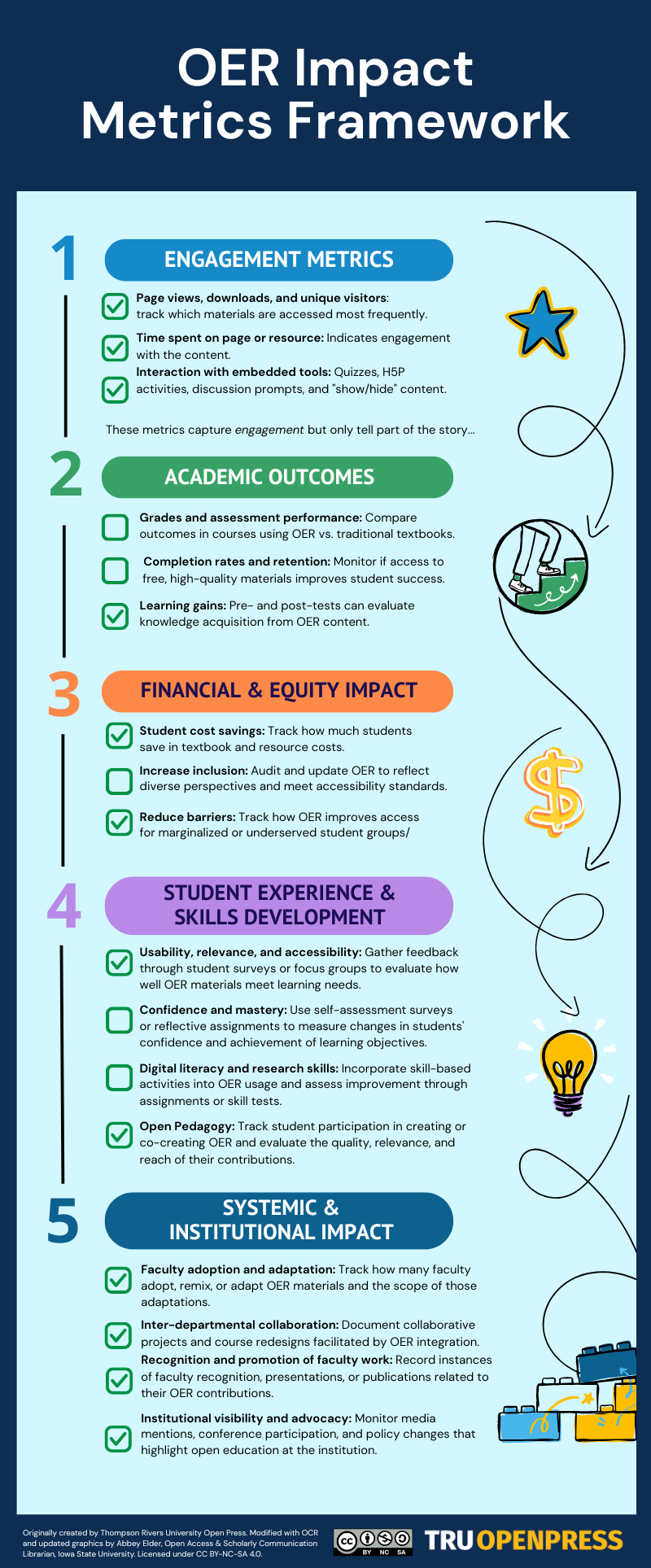OER Impact
Measuring the Impact of Open Educational Resource
TRU Open Press is committed to understanding and demonstrating the impact of Open Educational Resources (OER) on students, faculty, and the broader institution. Our OER Impact Metrics Framework provides a structured approach to evaluate five key areas: engagement, academic outcomes, financial and equity impact, student experience and skills development, and systemic/institutional influence. By tracking metrics such as resource usage, learning gains, cost savings, faculty adoption, and participation in open pedagogy, we gain insights that help improve OER quality, accessibility, and reach. This framework ensures that our open resources are not only freely available but also meaningful, effective, and inclusive for learners and educators alike.
You may notice there are checkmarks next to some of the metrics on the graphic; those are the impacts we are currently recording, however, others are proving more challenging. We’d love to hear from you: How are you tracking OER impact?
Note on Collaboration
This infographic was originally created by TRU Open Press and later modified by Abbey Elder, Open Access & Scholarly Communication Librarian at Iowa State University. Abbey enhanced the file by adding OCR and refreshing the graphics, then generously shared it back with us. We’re grateful for this collaboration—it’s a great reminder of how open education thrives when we share, adapt, and build on each other’s work. Licensed under CC BY-NC-SA 4.0.
Project Impact Form
At TRU Open Press, we’re continually inspired by the amazing ways learners and educators bring open education to life, making a difference in their communities and beyond. We’d be thrilled to hear your story—how our resources have supported your teaching, learning, or projects—and share your impact with others.
Impact – TRU Open Press

